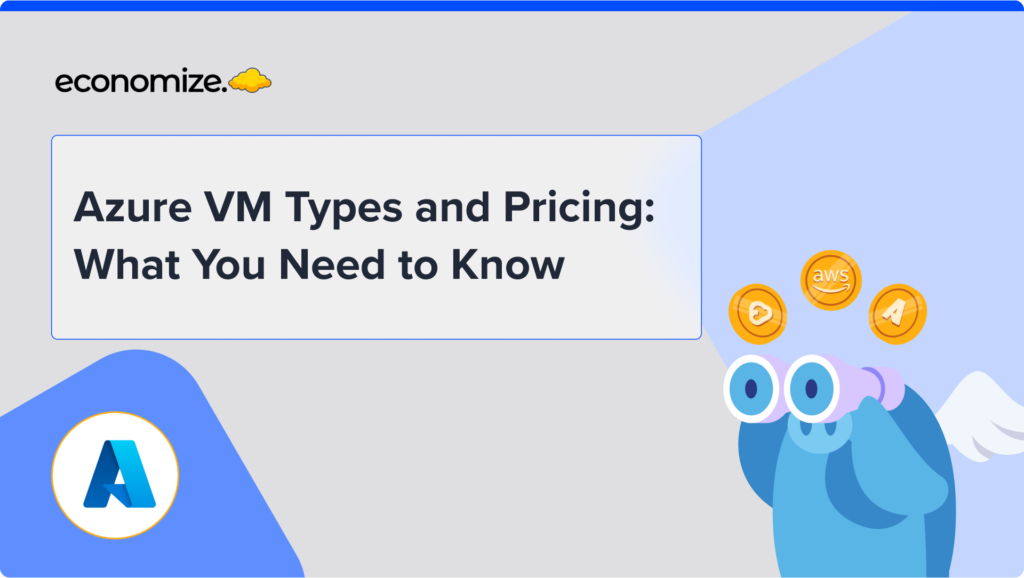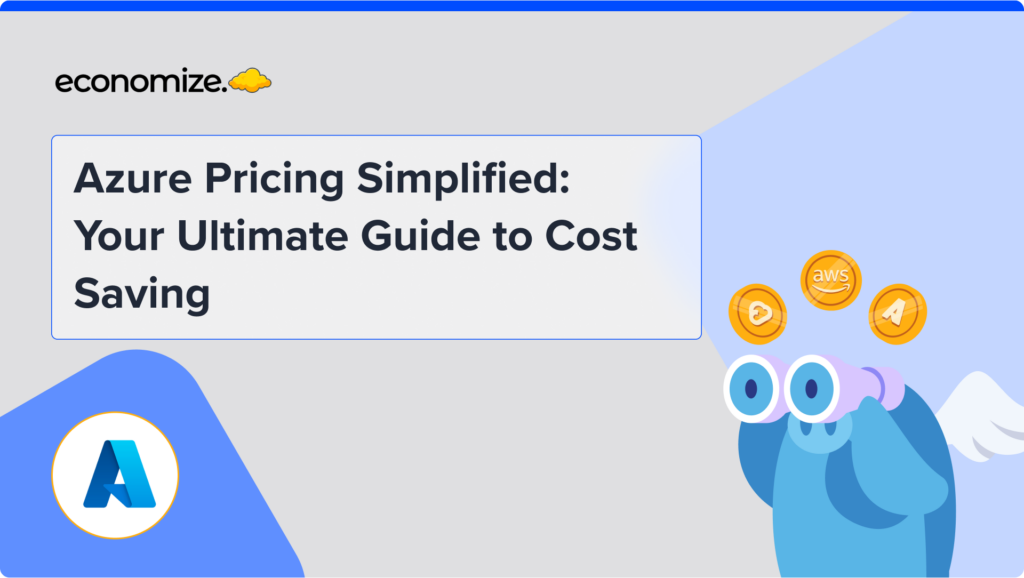What Are Azure Reserved Instances?
Azure Reserved Instances is a strategic pricing plan that helps reduce your cloud expenses. It offers considerable discounts on your Azure resources in exchange for a commitment to use Azure services for one or three years. This plan is best suited for workloads with consistent resource needs. While choosing Azure Reservations a discounts of up to 72% are applied to your billing, without affecting the state of any resources. Azure allows for upfront or monthly payment options, with no additional fees for choosing monthly payments, though this option applies only to Azure services, not third-party products.
What Are the Advantages of Using Azure Reserved Instances Over On-Demand Instances?
On-Demand Instances are pay-per-use cloud resources. These resources are priced on a pay-per-use basis. These instances do not require any upfront commitment and offer flexibility to scale up or down based on demand. While this provides agility, it can be more expensive than Reserved Instances due to the lack of long-term commitment or volume discounts.

- Cost Efficiency: Reserved Instances offer considerable cost reduction compared to on-demand instances. By reserving resources in advance, businesses benefit from a substantial discount, often up to 72%, compared to the pay-as-you-go Azure pricing model. This cost advantage makes Azure Reserved Instances ideal for organizations with predictable usage patterns. This helps businesses to reduce their spending on cloud infrastructure.
- Predictability and Budgeting: For financial planners and budget-conscious decision-makers, Azure Reserved Instances offer predictable, stable costs. Organizations can forecast cloud expenditures with greater accuracy, allowing for more effective budget management. This predictability is especially critical for large enterprises where cloud costs can fluctuate based on usage.
- Performance Consistency: While Azure RIs come with the benefit of cost reduction, they do not compromise performance. Reserved resources are available whenever they are needed, without performance degradation. This ensures that critical workloads run without interruption, even though costs are reduced.
- Enhanced Flexibility: Contrary to common perception, Azure RIs offer a degree of flexibility. For instance, users can modify certain aspects of their reservations, such as the region or resource type, within specific boundaries. This flexibility allows enterprises to adjust their resource needs in response to changing business demands.
When to Use Azure Reservations?
Azure Reservations are used when an organization has a clear understanding of its cloud usage and can predict resource needs over a one- or three-year term. They are ideal for:
- Stable workloads that require consistent and long-term usage.
- Cost-conscious businesses that want to lock in savings by committing to reserved resources.
- Enterprises with predictable cloud consumption patterns need to manage cloud costs effectively.
Azure Reserved Instances are ideal for:
- Enterprise Applications: Large-scale enterprise applications with steady resource consumption.
- Database Services: Databases with consistent storage and compute needs, such as SQL Database or Azure Cosmos DB.
- High-Performance Computing: Workloads requiring specialized VM configurations that will not change significantly over time.
How Is the Azure Reservation Discount Applied to Virtual Machines?
Azure Reserved Instance discounts apply to your resources based on the configurations chosen during purchase. These configurations include instance size, region, and resource type. When a VM that matches the reservation criteria is used, the discount is applied automatically.
For example, if a Reserved Instance is purchased for a Standard D2 VM in the West US region, it will apply to any Standard D2 VMs running in the same region.
If no matching resources are running at a given time, the reserved hours are considered “unused,” and the discount is not applied. Importantly, these unused hours cannot be carried over or refunded. Therefore, consistent usage of reserved resources is essential for maximizing savings.
Azure also provides instance size flexibility, meaning that Reserved Instances can apply to VMs within the same size group. For instance, if a business reserves a Standard D2 VM, but later switches to a Standard D4, the discount will still apply, provided the instance falls within the same size group.
What Are Reservation Purchase Recommendations?
Azure offers Reservation Purchase Recommendations as a tool to guide businesses in selecting the right quantity of Reserved Instances. The recommendations are based on past usage data and suggest the most cost-effective reservation quantity for maximizing savings.
How Recommendations Are Calculated?
The recommendation engine evaluates historical usage data over a period of 7, 30, or 60 days, and then simulates costs with and without reservations. By adjusting the quantity, the engine determines the reservation amount that maximizes potential savings. These recommendations take into account any special pricing or discounts already applied to on-demand usage.
Purchase in Azure Portal
In the Azure portal, users can view these recommendations directly when purchasing a reservation. The Recommended Quantity shown is the optimal number of Reserved Instances to purchase for the greatest savings. However, users can adjust this quantity based on their specific needs.
Existing Reservations
The system also factors in any existing reservations. If an organization already holds Reserved Instances, the recommendations will exclude those resources from the calculations to prevent overbuying.
Azure Reservation Scope
When you shut down your reserved instance, Azure will try to assign your reservation discount to another one that fits. If no match is found, the discount remains unused. But you can adjust the scope after purchase if needed. For virtual machines across different subscriptions, set the scope to “shared” so the discount applies across the account.
How Do I Set Up Reservations in Azure?
Step 1: Assess Resource Requirements
The first step in setting up an Azure Reserved Instance is evaluating the organization’s cloud usage patterns. Identify the virtual machines or services that are most commonly used and assess their availability in the desired region. Historical usage reports can provide insight into these patterns.
Step 2: Determine Reservation Terms and Payment Methods
Azure Reservations are available for one-year or three-year terms. Enterprises should evaluate their long-term needs to select the most suitable contract duration. Payment for Reserved Instances can be made upfront for the entire term, or on a monthly basis. The choice depends on the organization’s financial strategy and cash flow.
Step 3: Select Appropriate Resources
After determining the terms, the next step is to select the specific resources that will benefit from the reserved capacity. For instance, choosing the size, configuration, and region for VMs is critical to maximizing savings. Azure’s tools, such as Azure Advisor and Reservation Recommendations, can help determine the optimal resources to reserve based on historical usage.
Step 4: Confirm Reservation and Activate
Once the appropriate configurations are selected, the reservation process can be completed through the Azure portal, Azure CLI, or PowerShell. After confirming the reservation, the selected resources will automatically receive the corresponding discounts.
How to Purchase Your Reservations in Azure
- To purchase a reserved instance in Azure, sign in to the Azure portal, navigate to “Reservations,” and select “Add” to begin.
- Choose the product, add it to your cart, and proceed to “Review + Buy” to complete the purchase.
- Reservation utilization may take up to 24 hours to reflect changes.
Azure Reservations vs Azure Savings Plans: What’s the Difference?
Azure Reserved Instances provide a fixed discount on specific resources, such as VMs, for a 1 or 3-year commitment, making them ideal for predictable workloads. Azure Savings Plans, on the other hand, offer more flexibility, applying savings across a variety of services and regions. While Reservations can save up to 72%, Savings Plans offer up to 65% in savings and work best for dynamic, changing workloads. The key difference lies in resource specificity versus broader flexibility.
| Feature | Azure Reservations | Azure Savings Plans |
| Commitment Duration | 1 or 3 years | 1 or 3 years |
| Pricing Model | Fixed discount for specific resources (e.g., VMs) | Flexible discount across various services (e.g., compute) |
| Flexibility | Resource-specific (e.g., VM size, region) | More flexible across different Azure services and regions |
| Savings | Up to 72% | Up to 65% |
| Best For | Predictable, steady workloads | Variable, changing workloads |
Conclusion
Azure Reserved Instances provide significant advantages by locking in discounted rates for a specific term. You can achieve substantial savings with Azure Reservations which improves budgeting accuracy and maintains performance consistency. With Azure Reserved Instances you not only secure discounts but also gain predictability in your financial planning. By selecting the right reservation options, you can manage your cloud resource and associated costs efficiently.
FAQs:
Q: What is the difference between Azure Reserved Instances and Pay-As-You-Go?
A: Azure Reserved Instances offer discounted pricing for a commitment to use resources for 1 or 3 years, while Pay-As-You-Go charges you based on hourly resource consumption without any long-term commitment.
Q: How to use Azure Reserved Instances?
A: You can purchase them via the Azure portal, select a resource type and term, and the discount will be automatically applied to matching resources within the chosen scope.
Q: Can Azure Reserved Instances be transferred?
A: Yes, Azure Reserved Instances can be transferred between subscriptions within the same billing account or region.
Is Your Cloud Budget Overwhelming?
Struggling with high cloud bills? Don’t stress any longer. Economize offers a simple solution to cut your expenses by up to 30%. Sign up for a free demo today and experience firsthand how quick and easy it is to reduce your costs and lighten your financial load.








